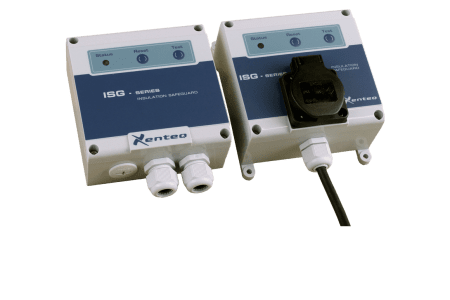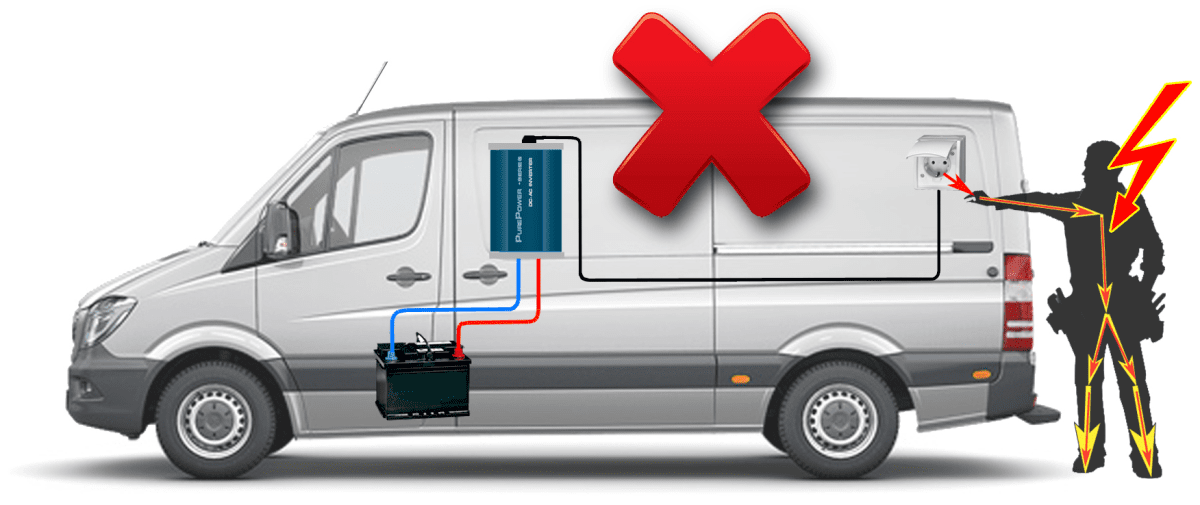ISG-series InsulationSafeguard
In a house or building, the personal safety of the mains voltage is regulated by means of an earth leakage circuit breaker in combination with an earth pin. That is a given for everyone. But what about when using an alternating current generator such as a DC-AC inverter or generator? After all, these devices also generate 230VAC.
Floating network system
The situation when using an alternating current generator is different. A device such as an inverter, generator etc. is namely a so-called floating network. This requires a different approach in terms of personal safety than in a normal situation such as in a building. But that does not remove the obligation to ensure the safety of the people who work with the inverter/generator.
Mobile units
Inverters and generators are often used in mobile/movable units such as mobile workshops (commercial vehicles), market vehicles, fire engines and construction sheds. As long as only the 230VAC is used in the unit, a special (expensive) earth leakage circuit breaker (class B) can be used. However, if the 230VAC voltage is brought outside or if the connected devices are used outside the unit, there is only one correct solution to work 100% safely. This is a so-called insulation monitor. An earth leakage circuit breaker (any type) is not sufficient in this situation! An insulation monitor is simply mounted between the 230VAC output of the alternating current generator and the consumers.
Consequences
If an accident occurs because there is no insulation monitor present, this has very serious consequences. The 230VAC will not be switched off if someone comes into contact with it. In addition, the responsibility of the owner of the unit and the installer comes into play. With the installation of just one device, the entire issue of personal safety is solved. An insulation monitor is also the only device that provides full coverage, both inside and outside the unit.
Other application situations
The above standard applies to vehicles and mobile/movable units that are used for commercial purposes. Caravans, campers, etc. are not subject to the legal obligation, but the circumstances are of course identical. A relatively new emerging application of inverters are beach houses, 'tiny' houses, garden houses, etc. Here there is no mobile unit. Because an earth pin cannot be used since one is dealing with a floating network, an insulation monitor is also a ready-made safe solution here.
Downloads
Dealers
New inverter series with build in transfer switch!
With the arrival of the new PurePowerSwitch our range of DC-AC inverters has been expanded. As an additional functionality this inverter has a built-in transfer switch.
Read more






